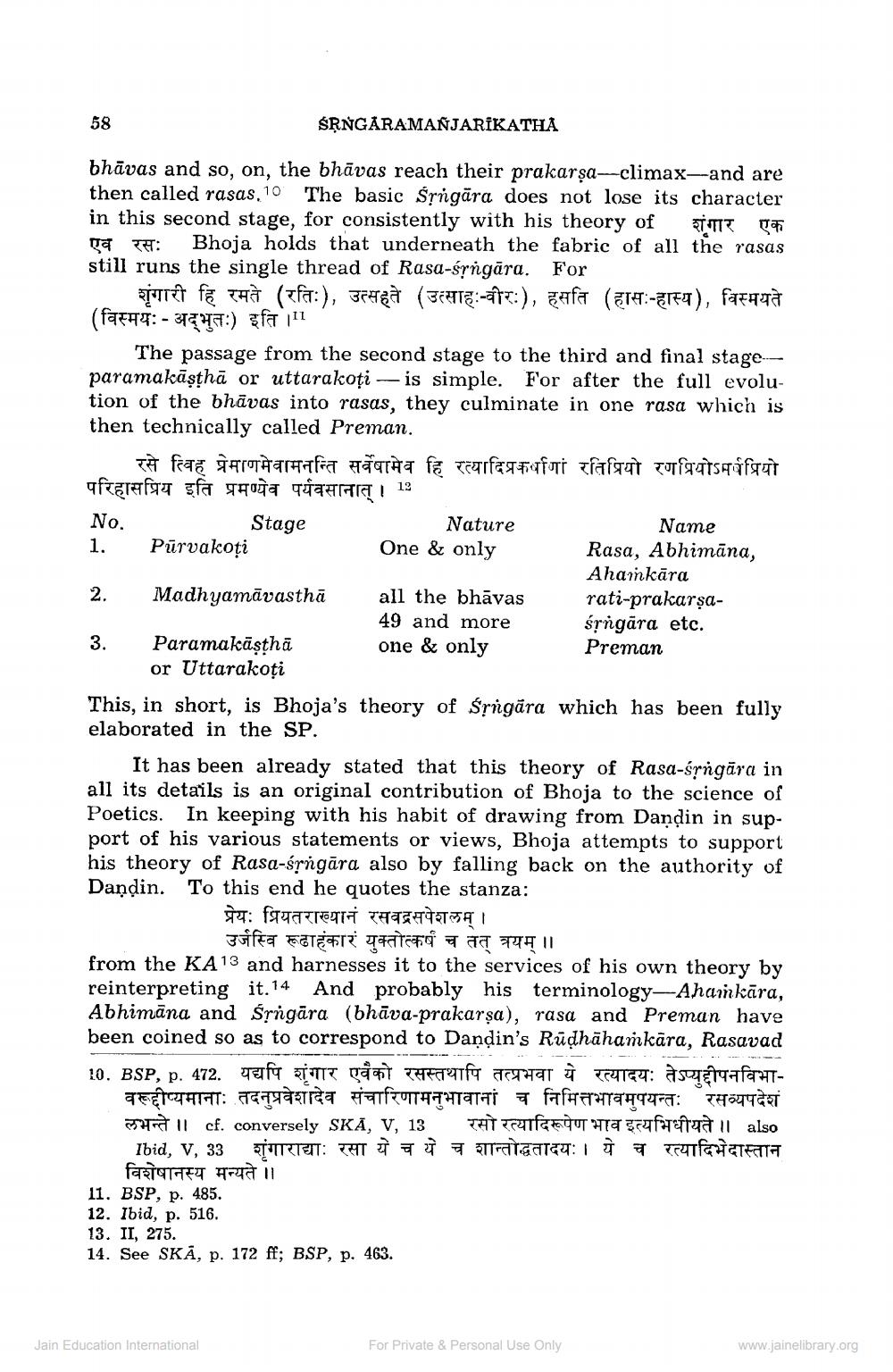________________
58
ŚRNGARAMANJARIKATHA
bhāvas and so, on, the bhāvas reach their prakarsa--climax--and are then called rasas. 10 The basic śrngāra does not lose its character in this second stage, for consistently with his theory of BTTTT Tapi Ta : Bhoja holds that underneath the fabric of all the rasas still runs the single thread of Rasa-śrngāra. For
ITIET fE THà (zfa:), zared (JETTE:-aft:), gafa (-ELTET), fakata (fach4:- 37 :) sfatill
The passage from the second stage to the third and final stageparamakāsthā or uttarakoți --- is simple. For after the full evolution of the bhāvas into rasas, they culminate in one rasa which is then technically called Preman.
रसे विह प्रेमाणमेवामनन्ति सर्वेषामेव हि रत्यादिप्रकर्षाणां रतिप्रियो रणप्रियोऽमर्षप्रियो परिहासप्रिय इति प्रमण्येव पर्यवसानात। 13 No. Stage Nature
Name 1. Pūrvakoti
One & only
Rasa, Abhimana,
Ahamkāra Madhyamāvastha all the bhāvas rati-prakarsa
49 and more śộngāra etc. 3. Paramakāstha one & only
Preman or Uttarakoți
This, in short, is Bhoja's theory of śrngāra which has been fully elaborated in the SP.
It has been already stated that this theory of Rasa-srngāra in all its details is an original contribution of Bhoja to the science of Poetics. In keeping with his habit of drawing from Dandin in support of his various statements or views, Bhoja attempts to support his theory of Rasa-śrngāra also by falling back on the authority of Dandin. To this end he quotes the stanza:
: faqatIETTA TATT I
उर्जस्वि रूढाहंकारं युक्तोत्कर्ष च तत् त्रयम् ।। from the KA13 and harnesses it to the services of his own theory by reinterpreting it.14 And probably his terminology-Ahamkāra, Abhimana and śrngāra (bhāva-prakarsa), rasa and Preman have been coined so as to correspond to Dandin's Rudhāhamkara, Rasavad 10. BSP, p. 472. EfT TTT på fit TOTT TOT À TRUTEUT: aspernaferवरूद्दीप्यमानाः तदनुप्रवेशादेव संचारिणामनुभावानां च निमित्तभावमुपयन्तः रसव्यपदेश
Il cf. conversely SKĀ, V, 13 THT CATETETUT HTA Saforeta II also Ibid, v, 33 TITTEIT: TITŪT I Tratat: TTTTTTTT
विशेषानस्य मन्यते ।। 11. BSP, p. 485. 12. Ibid, p. 516. 13. II, 275. 14. See SKĀ, p. 172 ff; BSP, p. 463.
Jain Education International
For Private & Personal Use Only
www.jainelibrary.org




